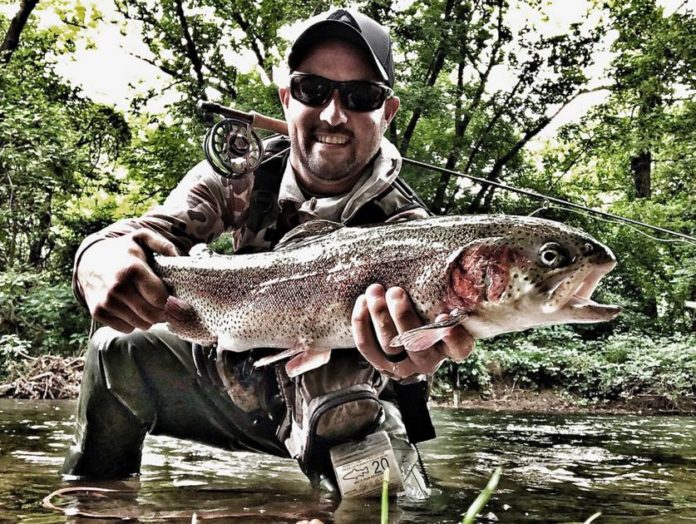The allure of fly fishing means different things to different people. For some, it’s an approach used to catch more fish. For others, it represents a unique personal challenge. For a select few, it’s a dedicated lifestyle choice, but for many anglers, it’s completely foreign.
There’s definitely a learning curve when deciding to take up fly fishing for the first time, but if serious about giving it a try, here are some suggestions to help navigate the process. In time, you’ll get the hang of it and perhaps even discover a new favorite pastime.
Getting Outfitted
Gear and equipment required for fly fishing can be overwhelming to someone new to the sport. There are different sized rods and reels designed for different situations, with the most versatile rig an 8- to 9-foot, 5-weight rod-and-reel combo, which can be purchased as an introductory package at most sporting goods stores for less than $150.
These come pre-rigged with backing, line, sometimes even leaders, tippet and a rod case. Fly lines, the weighted, often-colorful synthetic lines used to cast, come in different forms as well with floating line, sinking line, etc., so discuss the scenarios you plan to fish with a pro-shop representative before purchasing.
Beyond the rod and reel itself, spools of 4x, 5x and 6x tippet, as well as some 9-foot 5x leaders, are needed. This is used to taper big clunky fly line down to a clear, skinny line that is nearly invisible to fish.
A leader can be used by itself, but after replacing flies and tearing line, it will become shorter over time. Thus, the tippet can be tied in incremental sections getting thinner and thinner to replenish the leader.
Be sure to do some research in knots for tying on the tippet. Blood knots and nail knots are popular options.
Moving away from the rod and reel itself, an assortment of flies and a fly box to hold them are needed. Other accessories needed include a fishing vest/pack, strike indicators, sinkers, floatant, nippers, forceps, a net (preferably with rubber netting), polarized sunglasses, waders/wading boots and of course a fishing license.
All-Purpose Flies
There are three main types of fly fishing, with several variations adding complexity, but primarily, this is dry fly fishing up top with no weight required, nymph or wet fly fishing underneath with weight and drifting required, or streamer fishing with weight and stripping required.
Basic, all-purpose flies based on those three categories are as follows:
Dry — Adams, Royal Wulff, Light Cahill, Elk-hair Caddis, Yellow Stimulator, Blue-winged Olive; Nymphs — Pheasant Tail, Gold-ribbed Hares Ear, Copper John, Greenie Weenie, San Juan Worm, Zebra Midge, Egg Pattern, Scud, Caddis Larvae; Streamers — Wooly Bugger in black, green and brown, both with and without bead heads.
Learning the Basics
There’s a lot to learn when it comes to casting, fly selection and how to read the water, but try to match the hatch and give the fish what they are already eating. By turning a few rocks, and watching feeding activity, you can gain some valuable insight and can prompt strikes by using flashy attention-grabbing flies.
If dry fly fishing, let the fly settle on the surface with minimal disturbance to the water. If fishing underneath, a strike indicator can signal a hit and when to set the hook. Both scenarios require a drag-free, natural drift.
Casting is something that should be practiced in an open yard or field before hitting the water. Then transition to an open water source before moving to tight spaces requiring greater control and casting abilities.
Watch a YouTube video on casting basics, or better yet, reach out to a mentor to learn. Many fly fishing clubs and Trout Unlimited chapters offer free or low-cost programs for teaching how to cast, tie flies and often will even take you fishing.
There’s definitely a lot of gear and learning required to be successful at fly fishing, but there’s also no better feeling than the steady pull of a running trout after a clean presentation and quality hook set. With time and dedication, even beginners can sample that satisfaction.
Credit: Source link































